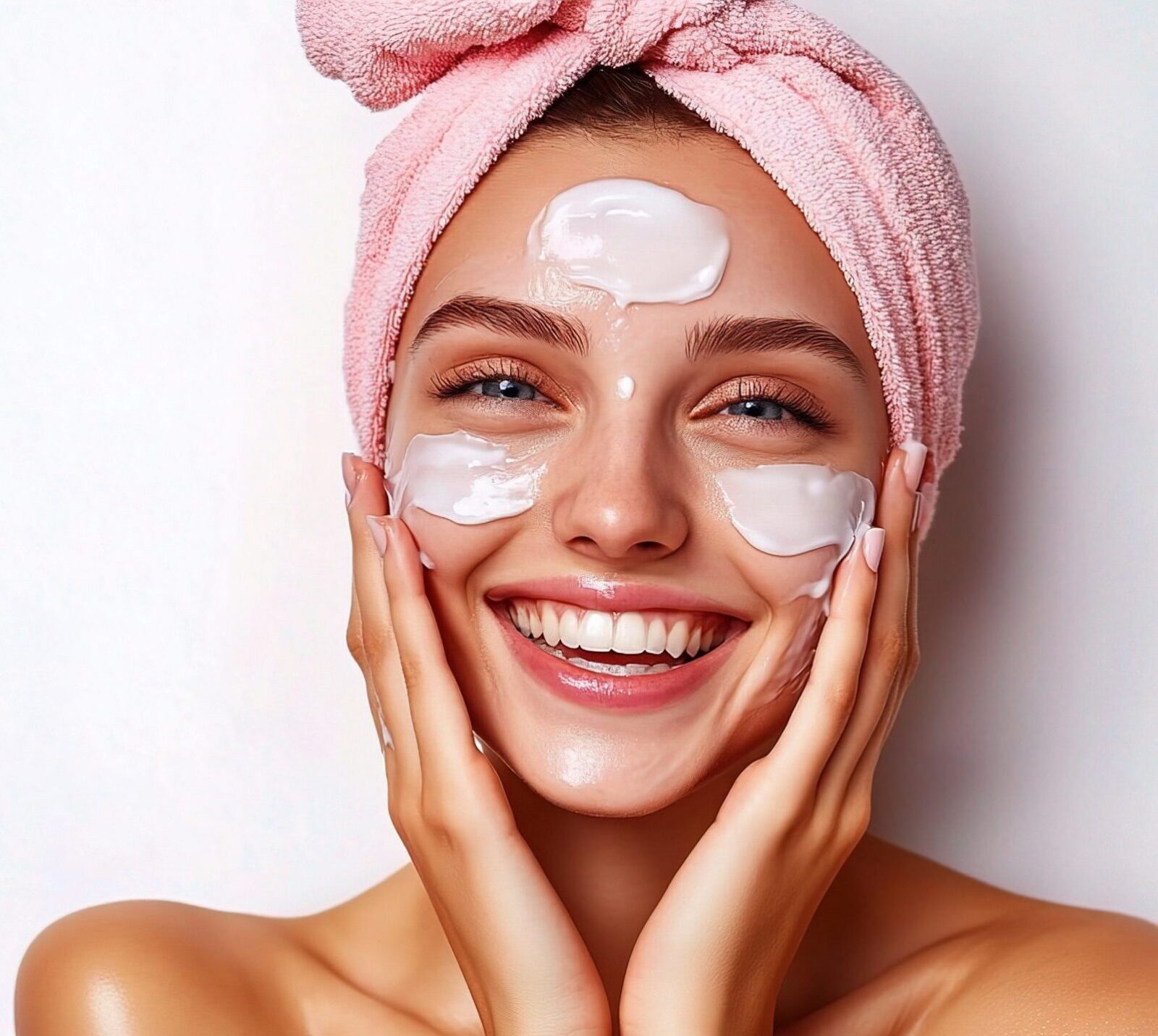Hyperpigmentation—those troublesome dark spots and patches on your skin—can be a frustrating issue to tackle. If you’ve delved into skincare solutions, two ingredients likely keep coming up: kojic acid and hydroquinone. Both have been studied extensively for their spot-lightening abilities, particularly for conditions like facial melasma.
Choosing between the two, however, can be a tricky decision. So here, we’ll unpack the efficacy and safety of these two popular ingredients. We’ll explore how they perform independently and together in combating skin discoloration. We’ll also address the 2020 update that made hydroquinone prescription-only, drastically changing its accessibility.
Get ready for a dive into the world of skin-lightening solutions and explore which option—kojic acid, hydroquinone, or perhaps a combination of the two—could be your ticket to a clearer, more even skin tone.
What is kojic acid?
Kojic acid is a versatile skincare ingredient with several potential benefits. However, as with any skincare ingredient, it’s always good to have a basic understanding of how it works. That way you can use it responsibly and get the best results.
Kojic acid is a naturally occurring substance derived from the fermentation process of certain fungi.¹ Interestingly, this compound is also produced during the fermentation of some foods, such as soy sauce and rice wine.²
Kojic acid is primarily known and studied for its skin-lightening properties. It works partly by inhibiting the production of free tyrosinase in the skin, leading to a reduction in dark spots and hyperpigmentation.
In addition to skin lightening, kojic acid has been noted to possess anti-inflammatory, antibacterial, and photoprotective properties.³ Its photoprotective properties mean it may help protect the skin against damage caused by exposure to the sun.
Kojic acid is often classified as a “cosmeceutical,” an unofficial term used to describe substances that blur the line between cosmetics and pharmaceuticals. These products often have effects similar to medications but don’t need to meet the same strict regulations governing pharmaceuticals.⁴ Despite this label, kojic acid can deliver effective results; however, it’s important to use it only as directed to ensure safety.
What is hydroquinone?
Hydroquinone is a topical cream specifically designed to treat areas of skin discoloration. These discolorations can arise from various conditions, such as melasma, chloasma, solar lentigines (sun spots or age spots), freckles, and post-inflammatory hyperpigmentation.⁵
Similar to kojic acid, hydroquinone creams targets and blocks tyrosinase in the skin where it’s applied. It also stops RNA and DNA synthesis which may alter melanosome formation, thereby selectively damaging melanocytes. These actionsprevents melanin, the pigment that gives skin color, from being produced. Over time, this results in a lightening effect on the skin, reducing the appearance of these dark spots.⁶
For optimal results, studies suggest using hydroquinone in combination with a retinoid and a corticosteroid.⁷ As a reminder, retinoids help skin discoloration by encouraging cell turnover and corticosteroids help reduce inflammation. This skincare trio can effectively address skin discoloration and promote a more uniform skin tone.
It’s important to note that hydroquinone underwent a significant change in availability due to a law change in 2020. Previously, you could purchase it as an over-the-counter product (OTC), meaning you could buy it without a prescription. However, now you are required to have a prescription to obtain hydroquinone.⁸
As of now, there is only one FDA-approved medication containing hydroquinone on the market, which is Tri-Luma Cream.⁹ So, if you’re considering hydroquinone for skin discoloration, you’ll want to consult with a licensed dermatology provider. They can provide a prescription and guide you through the appropriate use of this strong skincare ingredient.
Hydroquinone vs. kojic acid: which is more effective?
If you’re trying to decide between hydroquinone and kojic acid for the treatment of hyperpigmentation, it’s important to know that both substances have demonstrated effectiveness. However, your unique skin type and condition will determine what may work best for you. It’s also always best to talk about any concerns you have with a licensed dermatology provider.
In a 2013 study, both hydroquinone and kojic acid were deemed highly effective in treating melasma, however, researchers found that hydroquinone worked more rapidly and more effectively in most cases.¹⁰
It’s also worth noting that another 2013 study demonstrated enhanced benefits when hydroquinone and kojic acid were used in combination with one another. This combination treatment showed better results for melasma than using kojic acid alone.¹¹
Having said that, each substance also has its own potential drawbacks. Some studies indicated that kojic acid can be more irritating to the skin compared to hydroquinone.¹² This means individuals with sensitive skin may find hydroquinone to be a more suitable option.
In summary, both hydroquinone and kojic acid can be effective for lightening dark spots. Donna McIntyre, a nurse practitioner at Curology notes, “Using either hydroquinone or kojic acid can help lighten your hyperpigmentation, but applying them in combination may offer enhanced benefits, too! That said, it is important to consider factors such as skin sensitivity and individual responses.”
Remember that everyone’s skin is unique, and results may vary. Consulting with a licensed dermatology provider can get you more personalized advice tailored to your specific situation and needs. They can guide you to the most suitable treatment protocol based on your skin type, condition, and the severity of your symptoms.
Are kojic acid and hydroquinone safe?
All medications and cosmetics have the risk of some adverse reactions or side effects. It’s always best to talk with a licensed dermatology provider to understand your individual risks from any product and the steps you can take to minimize them.
Adverse effects of hydroquinone
The known possible adverse effects of hydroquinone are:¹³
-
Redness/irritation
-
Inflammation
-
Dryness
-
Stinging
-
Allergic contact dermatitis
There is also a possibility of a condition called ochronosis, which results in blue-black or gray-blue discoloration of the skin. This side effect is rare, though.¹⁴
At one point, there was a suggestion that hydroquinone could be carcinogenic (have the potential to cause cancer). However, this concern was based on studies of rodents being given large doses of the medication internally for an extended period. None of the studies were based on humans using hydroquinone on their skin.¹⁵ There are no conclusive studies supporting hydroquinone being carcinogenic to humans and there are no cases linking the topical use of hydroquinone to any type of cancer in humans.¹⁶
Adverse effects of kojic acid
Multiple studies have shown that concentrations of kojic acid of 1% or less are safe and well-tolerated when used for up to two years without any significant side effects.¹⁷
For those who do experience adverse effects, the most commonly reported reactions are:¹⁸
-
Contact dermatitis
-
Localized irritation
-
Swelling
-
Itching
-
Pain
Curology offers personalized skin care products
If you want more information about getting rid of hyperpigmentation or which skincare ingredients are right for your skin, Curology’s licensed dermatology providers will work with you to assess your skin, discuss your skincare goals, and provide custom treatment options. We’re here to take the guesswork out of your skincare routine.












